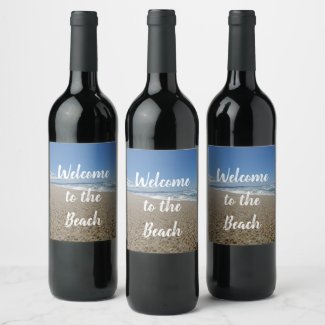I was recently "organizing" my collection of sea glass which basically means that I was taking time to explore and admire my collection. I began collecting sea glass many years ago when on South Padre Island in Texas and I found a piece of beach glass and pottery at the waterline. I didn't even realize that pottery or glass became so weathered and smoothed by the ocean until that point and I was hooked. On my many trips to a beach point since my first find, I am on the lookout for the gleaming piece of glass lying in the sand. After I began looking for glass, I would find one or two pieces on most trips to Southern California but on my last trip to the Monterey Bay area of California, I brought home almost four pounds of glass. Most of my finds were common glass colors of green, white, and brown but there were several rarer finds of blue, milk glass, or pieces that have clearly been tumbling for close to 100 years.
If you are interested in finding or collecting sea glass, it is important to understand the history of the area you are visiting and the tides. Why is history important? Some areas of the ocean have been used as a dumping ground many years ago for trash. Old plates, jars, glasses, and the like were often deposited in the ocean long before anyone knew how very damaging to the ocean that could be. In contrast to actually dumping in the ocean, some old dump sites were on land at one point but are slowly eroding into the sea, over time adding more and more glass and pottery to be tumbled as the years go by. Beach points near old shipping lanes are also excellent locations for collection. Monterey Bay is an ideal area given the landscape of the ocean floor and nearby dumping many years ago.
As mentioned, the tides are also an important factor. After storms when the ocean is churred and powerful is an ideal time to search but on a day to day basis there are two schools of thought. One is to search just after high tide to capture fresh pieces just as they wash up and the waves begin to recede. This method can work well especially for crowded beaches that get lots of visitors and collectors. The other method is to wait until just before the lowest tide and have the entire expanse of the beach to search. If you use the low tide method, make sure you search the waterline area first and then focus higher up the beach on your walk back to your car or hotel as the water will begin coming in again. If I am staying close enough to the sand, I head out during both tide times because there are no rules about just searching once a day. Look for anything gleaming in the wet sand. White isn't necessarily the easiest color to see but it is among the most common of all colors so you are likely to find that color easily enough once you start looking. Pottery will also take on a gleam when wet so look for color on the sand as much pottery had been painted or decorated many years ago.
If you are planning to visit the Monterey area and wish to collect, Fort Ord is an excellent starting point. It is a well-known collection stretch of beach for collecting glass and pottery. Bring a bag or a bucket and enjoy a leisurely walk while looking for treasures.




Comments